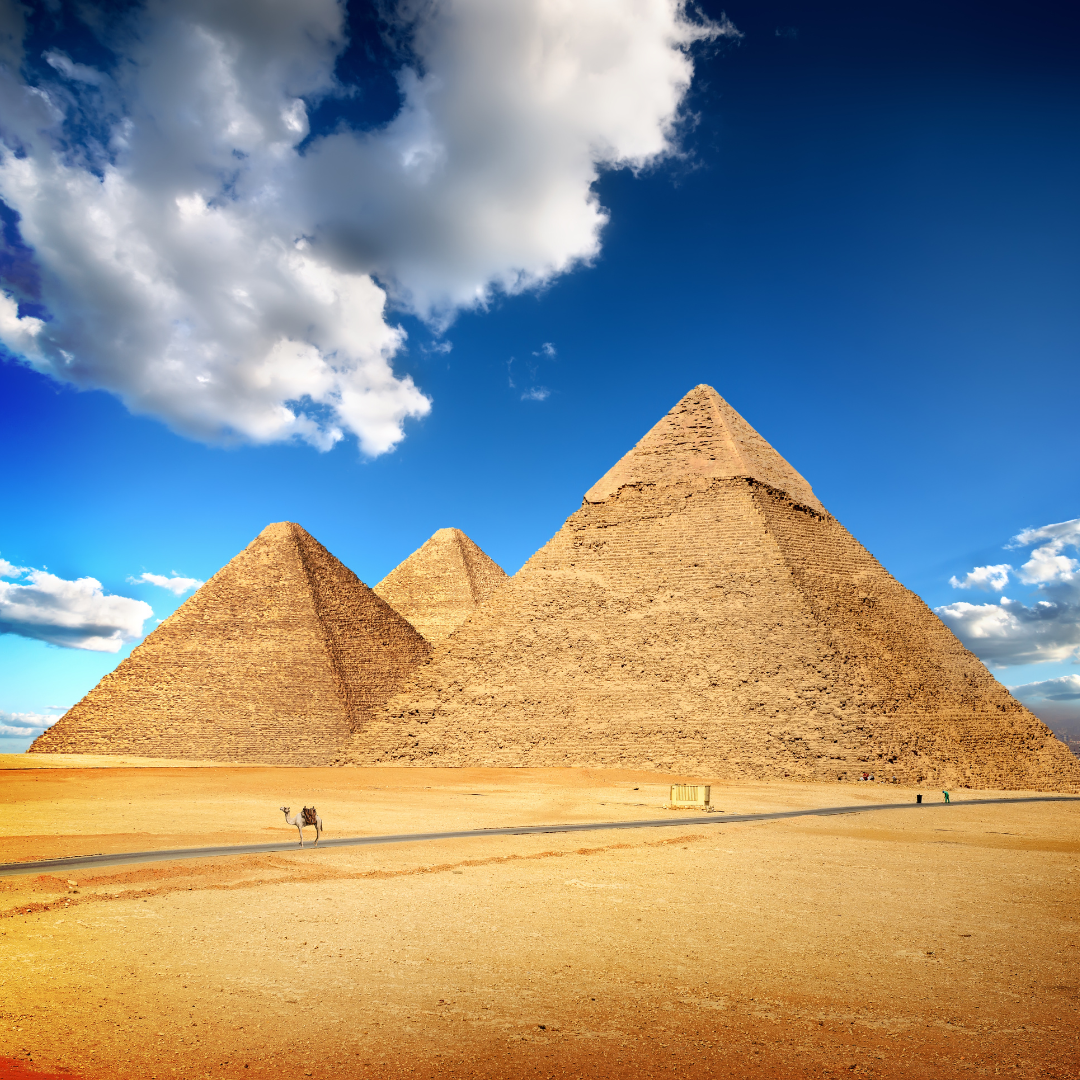The Pyramid of Giza, one of the Seven Wonders of the Ancient World, stands as a testament to the ingenuity and architectural prowess of ancient Egypt. With its colossal size and enigmatic history, this magnificent structure has fascinated and perplexed historians, archaeologists, and travelers for centuries. Join us on a journey through time as we delve into the mysteries and marvels of the Great Pyramid.
A Monumental Marvel
Located on the Giza Plateau, just outside modern-day Cairo, the Pyramid of Giza, also known as the Great Pyramid, is the largest and most well-preserved of the three pyramids in the Giza pyramid complex. Built during the Fourth Dynasty of the Old Kingdom of Egypt, around 2580–2560 BC, this astonishing structure has stood for over 4,500 years.
Incredible Dimensions
The Great Pyramid’s dimensions are nothing short of awe-inspiring. It initially stood at 146.6 meters (481 feet) but is slightly shorter today due to the loss of the outer casing stones. This ancient marvel was the tallest man-made structure in the world for more than 3,800 years. It’s composed of an estimated 2.3 million limestone blocks, each weighing an average of 2.5 tons. The precision with which these blocks were cut, transported, and assembled is a remarkable feat of engineering.
Architectural Precision
One of the most puzzling aspects of the Great Pyramid is its remarkable alignment. The sides of the pyramid are aligned to the cardinal points of the compass with incredible precision, deviating by only a fraction of a degree. How the ancient Egyptians achieved this level of accuracy without modern technology remains a subject of debate and speculation.
Theories and Mysteries
The purpose of the Great Pyramid has long been a topic of debate among scholars and enthusiasts. While many believe it served as a tomb for Pharaoh Khufu (also known as Cheops), others propose alternative theories, including its use as an astronomical observatory or a repository of ancient knowledge. The lack of definitive evidence leaves much room for imagination and continued exploration.
Intriguing Passageways
Inside the Great Pyramid, a series of passageways and chambers adds to its mystique. The King’s Chamber, made of red granite, houses an empty sarcophagus, while the Queen’s Chamber is a bit smaller and contains a curious shaft that extends into the pyramid. The passageways and chambers are thought to have symbolic and practical significance, but their exact purpose remains an enigma.
Ancient Ingenuity
The construction methods used for the Great Pyramid are another source of wonder. Theories range from using simple ramps to more complex systems involving counterweights, but conclusive evidence is scarce. Regardless of the method, the sheer scale of this endeavor reveals the remarkable abilities of the ancient Egyptians.
A Timeless Icon
The Pyramid of Giza has left an indelible mark on the world, influencing architecture, art, and culture throughout history. It has been a source of inspiration for countless explorers and adventurers, including Napoleon Bonaparte during his Egyptian campaign. Its grandeur and enigma continue to captivate the human imagination.
Conclusion: A Monument to Human Achievement
The Great Pyramid of Giza stands as an enduring testament to the capabilities of ancient civilizations and their boundless ambition. Its mysteries continue to intrigue and inspire, making it not only a wonder of the ancient world but also a symbol of human curiosity and perseverance. As we gaze upon this monumental marvel, we are reminded that there are still many secrets hidden within the sands of time, waiting to be uncovered.
So, the next time you stand before the Pyramid of Giza, let its grandeur and mysteries transport you back to an ancient world of innovation and wonder, and ponder the questions that have intrigued scholars for millennia.
